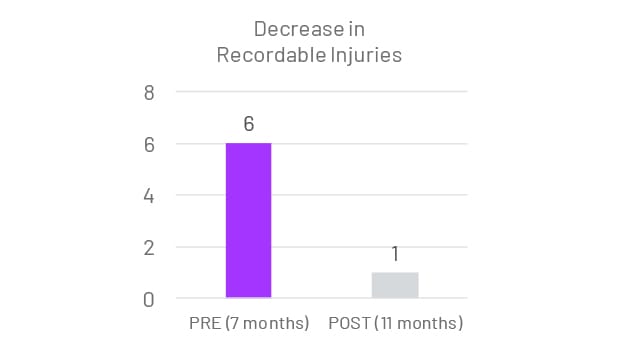Challenge
A Fortune 1000 organization in the freight and railway products industry sought to improve its safety culture and performance across its U.S. operations. After some significant injuries at its major sites, senior leadership identified safety leadership gaps at the supervisor level. Details gathered from incident investigations, safety audits, and interviews all suggested that supervisors at these sites regularly exhibited high-risk behaviors and lacked the interpersonal and leadership skills necessary to lead safety effectively. The organization had already been utilizing Talogy’s pre-hire assessments for entry-level positions for over four years at other facilities, which had led to a significant decrease in recordable and lost-time injuries over a three-year time span.
Given this history of successful partnership and proven results, the organization then reached out to Talogy for a development solution that could address the need to identify and improve safety leadership gaps in its current supervision. One particular facility within the manufacturing division was identified as a pilot site. This particular site manufactures rubber products for the rail and locomotive industry and employs approximately 150 employees. Due to the fact that it was experiencing many of the aforementioned leadership behavioral issues, it was an ideal site for this pilot study.




